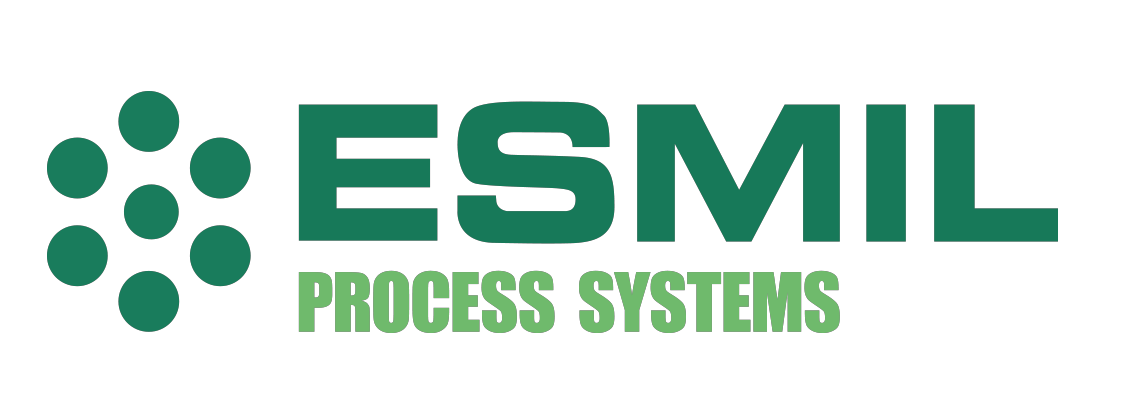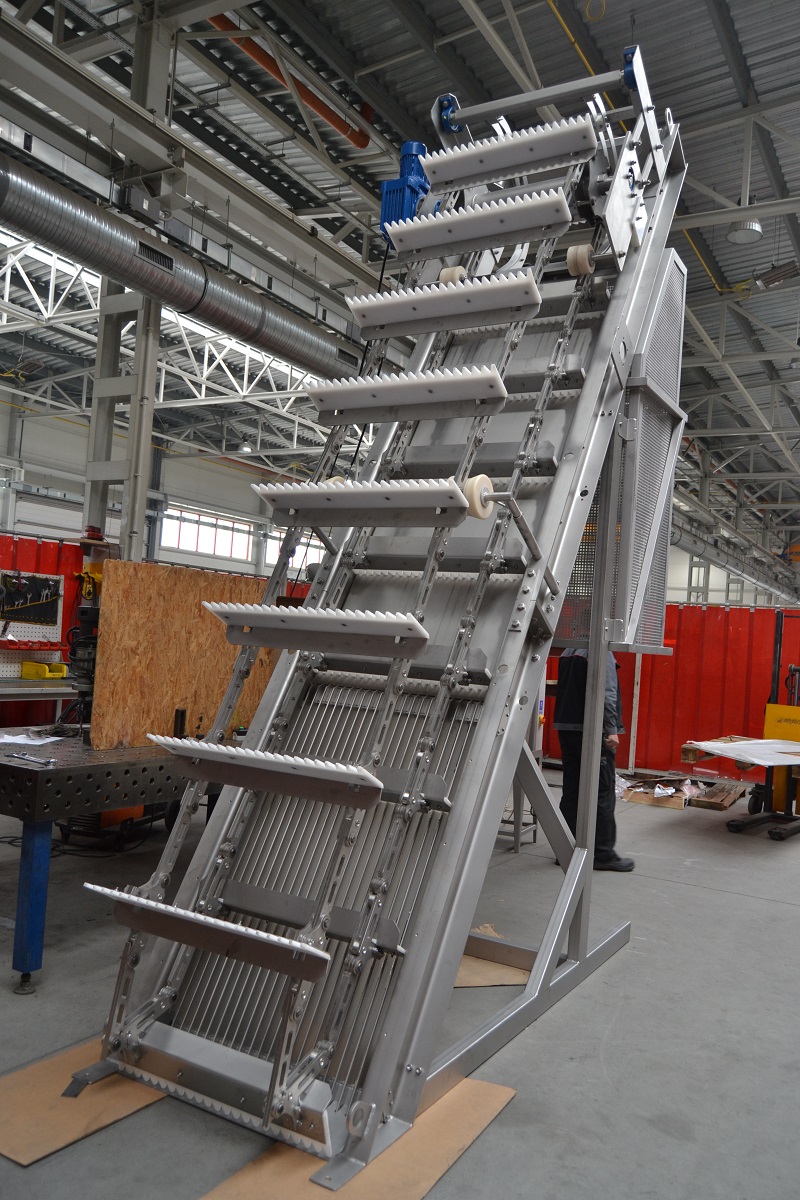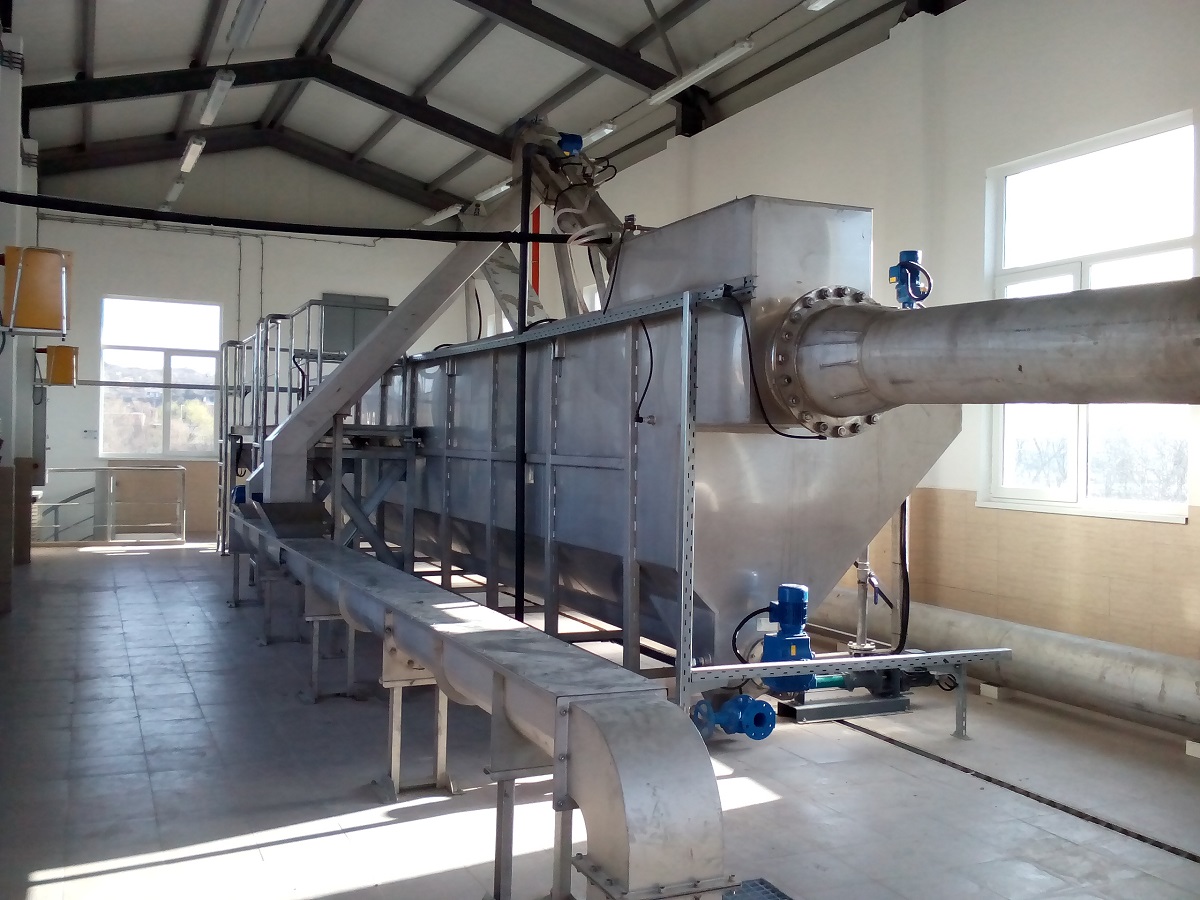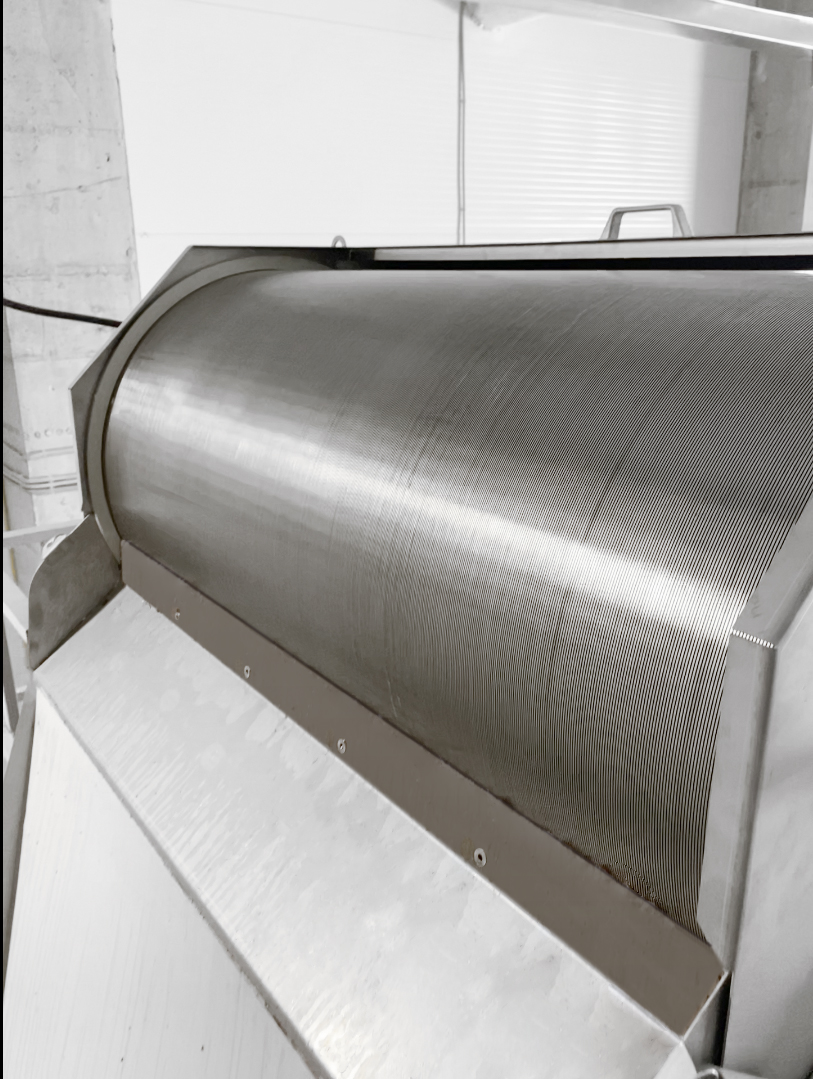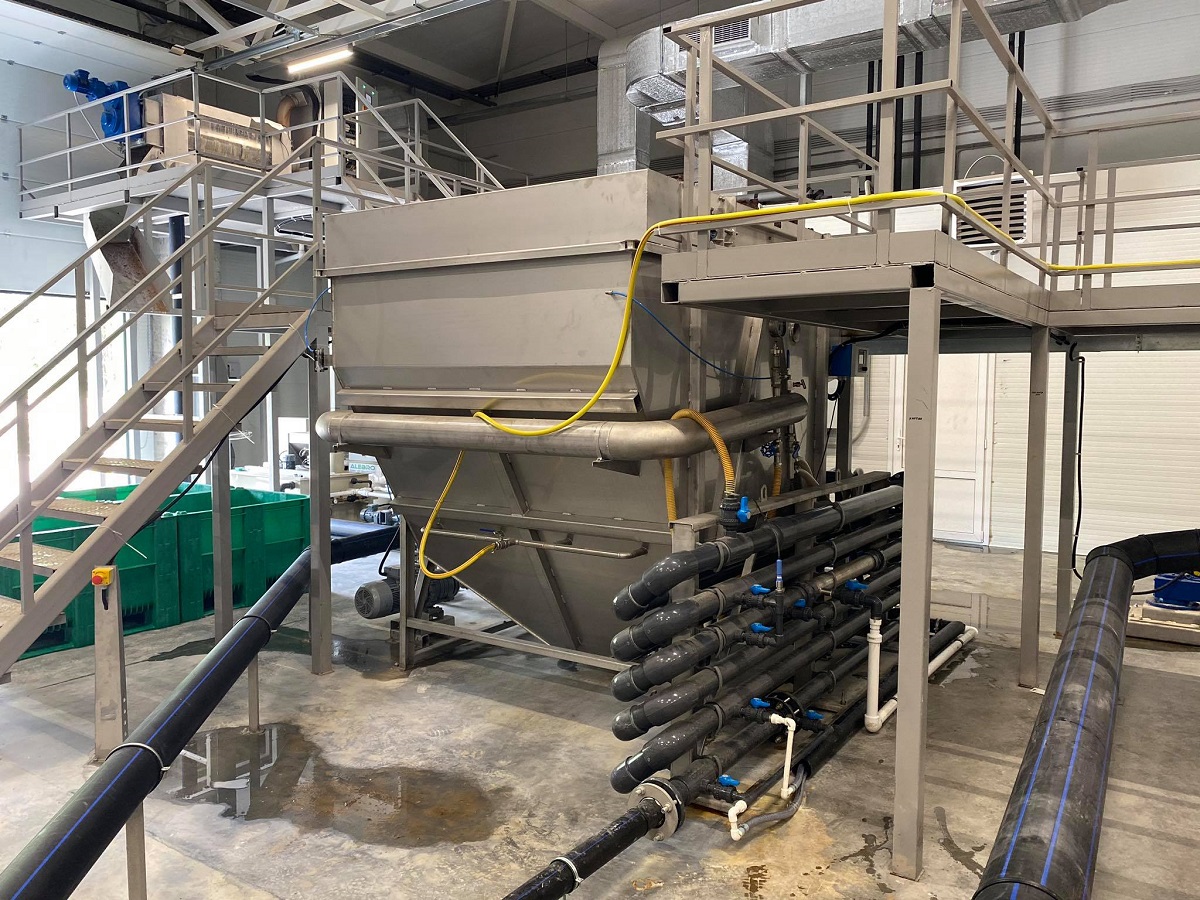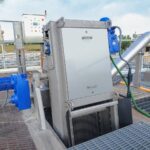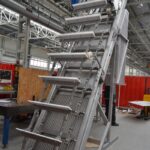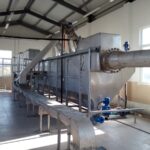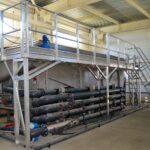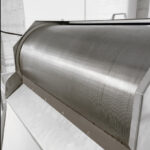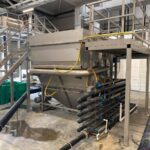Preliminary treatment
Preliminary treatment is intended to remove coarse solids, debris, grit as well as part of suspended solids, fat, oil and grease from a wastewater when it enters a wastewater treatment plant (WWTP). The main purpose of this stage is to protect the operation of WWTP and prevent equipment form clogging or damaging; additionally it can help to reduce the solids load for subsequent treatment processes.
Coarse screens and grinders
Coarse screens have openings of more than 6 mm and are intended to remove large solids and debris from wastewater which can possibly damage pumping or other equipment, clog the pipes or by any means mechanically interrupt the normal operation of the wastewater treatment plant.
Catenary Bar Screen
Catenary bar screen is a reliable solution to prevent the damaging of equipment at WWTP and pumping stations by removing the coarse solids, large debris and other material from a wastewater. It is installed in a chanel and consist of an inclined filtering bar screen and rakes mounted on a chain mechanism at a regular interval. The chain is driven by an electric drive allowing the rakes to remove the solids from the screen moving them up to the top of the screen for discharge.
The main feature of the screen is the Support Chain which makes it possible to operate with only one fixed axis. This prevents the jamming of the screen with large objects by flexible adaptation of the chain position. Moreover, this special chain design makes it more reliable and safe comparing to chain mechanisms used in other screens.
Rake Bar Screen
Rake Bar Screen is a reliable time-tested solution when removal of large and heavy debris is required. It is installed in a chanel and consist of an inclined filtering bar screen and rakes mounted on a chain mechanism at a regular interval. The chain is driven by an electric drive allowing the rakes to remove the solids from the screen moving them up to the top of the screen for discharge.
Back Raked Bar Screen
Back Raked Bar Screen is a reliable solution when removal of large and heavy debris is required. It is installed in a chanel and consist of an inclined filtering bar screen and rakes mounted on a chain mechanism at a regular interval. The chain is driven by an electric drive allowing the rakes to remove the solids from the screen moving them up to the top of the screen for discharge.
The main feature of the screen is the position of the chain mechanism which is placed from the back of the screen (relative to the WW flow direction). This greatly reduces the possibility of fouling with any materials or jamming with large objects, which is useful for the application in narrow chanels. Moreover, the bars fixed only in the top of the screen to exclude the risk of rakes jamming even in case of wastewater treatment which contains fibers.
Gret and Grease Separation
Mechanical treatment unit M-Comby
Mechanical treatment unit M-Comby is a compact unit which effects all pre-treatment stage requirements, ensuring the efficient removal of waste, sand and grease from the municipal wastewater stream.
Combined unit M-Comby has a very small footprint which is advantageous in older plants or where construction space is limited. Mechanical treatment unit M-Comby operations are fully automated and reliable making it easy to operate and maintain, requiring minimal operating/maintenance staff. All these features make the high quality pre-treament affordable even for small WWTP.
DAF-Units
Dissolved Air Flotation (DAF) is a wastewater treatment process which used to remove most of the suspended solids and FOGs.
DAF process takes place in DAF-units. To remove suspended solids and other particles from wastewater, together with a special air-water mixture it is fed to the inlet chamber of DAF-unit. Air-water mixture or so-called white-water is the oversaturated air solution converted in the numerous microbubbles when inletting it to the feed as the pressure drastically drops. Fine air microbubbles lift the suspended solids to the water surface whilst the heavier particles settle to the tank floor. The layer between the generated foam (froth) on the surface and settled solids is a clarified water which is then being discharged by overflowing through an adjustable outlet weir.
In DAF-units, a part of the treated water is automatically recycled for the preparation of the white-water to reduce fresh water consumption. For this, treated wastewater together with an atmospheric air is pumped by means of multiphase pump into the saturator and being pressurised up to 5.0-6.5 bar before feeding the DAF-unit tank. To intensify the process and to increase the suspended solids capture rate, there are also few other auxiliary white-water inlets to the DAF-unit tank.
In case when the high clarified water flow rate is needed, DAF-Units can be supplied with the innovative air bubble generator. Low footprint, simplicity, lower energy consumptions and adjustability are among other advantages of the solution.
The foam layer is removed from the water surface by using a chain-scraper device installed on the top of the DAF-unit tank and is drained into the built-in froth collection hopper. Depending on the wastewater treatment process, sludge discharge pump can be installed to periodically discharge the collected froth when reaching the set level in the froth hopper.
Primary treatment
Primary treatment is used to remove small material, suspended and floating solids from a wastewater. Usually starting with a fine screening, It protects the operation of the wastewater treatment plant. Going further along the process it removes considerable part of contaminations from wastewater already making it suitable for reuse, discharge or reduces the suspended solids load for subsequent treatment stages.
Fine Screens
Fine screens (with openings less than 6 mm) and very fine screens (typically with openings of 0.25 to 1.50 mm) are intended to remove smal material which can possible cause problems on the next treatment stages generally by clogging equipment.
Fine and very fine screening are usually installed after coarse screens if large solids or debris are present in the wastewater. Fine screening effluent can be fed to the main treatment stages as flotation or filtration skiping other preliminary and primare treatment stages.
Step Screen
Step Screen is a reliable solution for a wide range of applications and flow rates. It is installed in a chanel and consist of two bar racks: movable and fixed; the racks are installed one into another making the bars alternating one by one. The distance between the bars of movable and fixed racks is a screen opening.
The main advantage of the screen is the absence of a chain mechanism making the operation easy and minimise the maintenance needed. The self-cleaning feature and the absence of the rake make its possible to use step screen for different types of wastewater, for high flow rates and low head losses even for screens with small openings.
Drum Screen Outside-in
Drum Screen is a reliable solution for fine mechanical treatment of municipal and industrial wastewater. In the Outside-In Drum Screens, wastewater is fed to the feeding chamber outside the drum. The stream is being filtering by going through a filtering mesh of the drum and gets inside it. Rotation of the drum move the solids to a scraper for discharge outside the drum.
Simple and compact design as well as high automation level, ease of maintenance and low power consumption makes the Drum Screen cost effective and ideal for small or container-type WWTP. Using down to 0.25 mm mesh makes it possible to remove considerable part of solids from a flow and to properly prepare it for the subsequent treatment stages; the Outside-In Drum Screen can be effectively used for the mechanical treatment of wastewater containing different contaminants such as fiber, feather, wool, grease etc.
